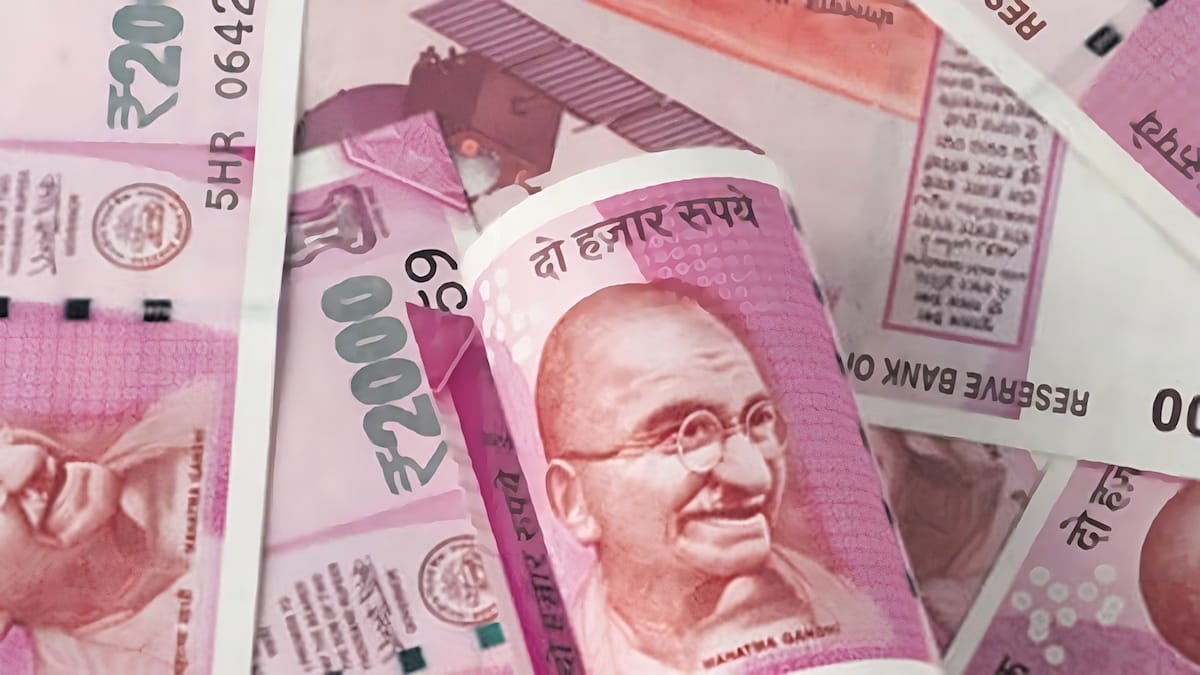
Following the demonetisation, many people posted selfies with the new Rs 2000 notes, but when they realized that corruption had doubled with this note in government offices, the common people became dissatisfied with this large denomination of note.
People began avoiding Rs 2000 notes almost immediately after they were released. The 500 notes came much later in the economy. So, if a customer paid Rs 680 and was given a Rs 2000 note, the retailer was required to give the customer Rs 13 in change. This was not feasible for every retailer. So, they started asking the customer not to give Rs 2000 notes. Likewise, everyone tried to avoid taking Rs 2000 notes, and it became a habit even though Rs 500 and Rs 200 notes were plenty in circulation. Those corrupt politicians and land mafias were happy because the bundle of Rs 2000 looked compact and made it easy to carry a greater amount of cash.
In the meantime, 2000 notes really disappeared from the market. Later on, the RBI decided to start withdrawing Rs 2000 notes from circulation, citing its “clean note policy”. The Rs 2000 note will remain legal tender. People will be able to deposit the Rs 2000 note at the bank or exchange it for notes of smaller denominations up to Rs 20000 at a time. The Rs 2000 note was introduced in November 2016, after the government announced the demonetization of Rs 500 and Rs 1,000 notes. Greedy black money holders see this as an opportunity rather than a threat and, by various means, like before, exchange, collect, and store their black cash as much as new Rs 2000 notes and continue to do so to easily hide huge sums.”
The RBI gradually increases new Rs 100 and Rs 500 notes circulation and completely stops printing Rs 2000 notes. Banks stop issuing Rs 2000 to their customers. The Rs 2000 currency note was issued to meet the Indian economy’s currency requirement in view of the sudden withdrawal of the Rs 500 and Rs 1000 notes under the demonetization drive. The purpose of printing Rs 2000 was achieved as soon as the notes in other denominations went into circulation in sufficient quantities.
The Rs 2000, measuring 66 millimeters by 166 millimeters, is magenta in color with an image of Mahatma Gandhi along with the Ashoka Pillar emblem on the obverse and a motif of the Mangalyaan on the reverse, along with the logo of Swachh Bharat Abhiyan. Neither the Swachh Bharat Abhiyan nor the detonation were great successes. Six years after demonetization, the black currency market continues to thrive. There has been a whopping 107 times increase in the number of fake currency notes of Rs 2000 denomination between 2016 and 2020.
In a written reply to the Lok Sabha, then the Minister of State for Finance Pankaj Chaudhary stated that 2,272 fake currency notes of Rs 2000 denomination were seized in 2016, 74,898 in 2017, 54,776 in 2018, 90,566 in 2019, and 2,44,834 in 2020. The number has been mostly rising since 2016, except once in 2018. Between 2019 and 2020, there has been a 170 per cent rise in fake currency notes of the Rs 2,000 denomination.
To contain the circulation of fake Indian currency notes (FICN), the government enacted the Unlawful Activities (Prevention) Act, 1967, formed the National Investigation Agency (NIA), and constituted the FICN Coordination Group (FCORD) to share intelligence and information among the security agencies of the states and the Centre. It also constituted the Terror Funding and Fake Currency (TFFC) Cell in the NIA to conduct focused investigations of terror funding and fake currency cases. 2000 notes were randomly printed and used for all unlawful activities; no government authorities could really control the damage.
Most election gimmicks were played with this denomination of notes. It failed to produce a cashless economy as whatever rise in e-commerce sales took place during that period, returned to the same growth trend-line as before in a matter of a few months when the cash supply was finally normalized. On November 8, 86% of India’s currency was nullified in an effort to clean out “black money” and “counterfeit notes.”
This effort resulted in a massive disruption to the existing social, political, and economic functions of the world’s second largest emerging market. In the ensuing days after demonetization, the public in general was hit quite hard, but it was the poor who took the largest share of the pain. The poor and the lower middle-classes, which constitute the vast majority of the population, simply did not have the access to structural and cultural resources needed to adapt to such shock economics. Now that there is a new hit, people have to line up again to get their Rs 2000 notes deposited. Commoners or small-time businessmen will suffer, but the corrupt will know how to make their way out.

